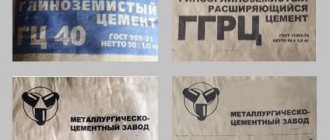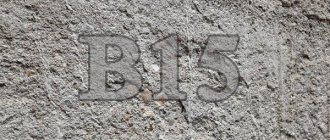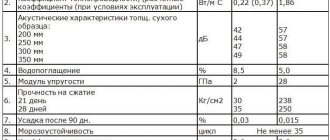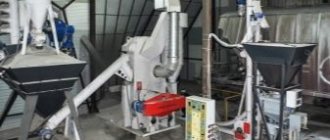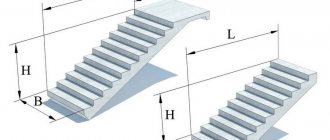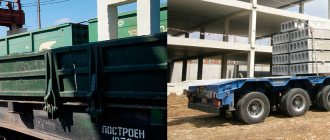Home |GOSTs and SNiPs |GOST 31108-2003. General construction cements. Specifications
Date: January 11, 2018
Comments: 0
It is impossible to carry out the construction of buildings and the construction of various construction projects without the use of binding materials. After mixing with water, they form a plastic mass that gradually hardens. One of the most popular building materials is cement. GOST, registered under number 31108 in 2003, regulates the technical characteristics of cements produced on the basis of Portland cement clinker. The document also contains requirements for the manufacture of cement compositions. Let us consider in detail the main provisions.
Structure of GOST 31108 2003 for general construction cements
The official document contains a set of requirements for cement compositions and covers the following issues:
- differences between the updated standard and the previously valid version;
- scope of application;
- classification criteria;
- decoding of symbols;
- technical specifications;
- requirements for feedstock;
- acceptance method;
- quality control rules;
- test methods;
- delivery, storage and warranty obligations.
The sections of the standard provide detailed information on all issues. Let us dwell in detail on the main provisions.
Cement is a material that serves to bind building elements
Where is pozzolanic cement used?
High sulfate resistance and high water resistance are the determining factors for the application of this type of cement:
- Construction of underwater and underground elements of hydraulic structures operating in conditions of sea and fresh water laundering: ship repair docks, protective jetties, dams, locks and embankments.
- Engineering networks: sewerage and water supply structures.
- Construction of tunnels, mine shafts, underground tanks.
- Construction of irrigation and drainage structures on saline and marshy soils.
- Construction of monolithic or prefabricated foundations of residential and industrial buildings under conditions of exposure to groundwater containing a high level of harmful impurities.
- Production of concrete products using steaming technology.
How does the updated GOST for cement differ from the internal version of the standard?
The active development of international relations has necessitated the need to revise the current domestic GOST for cement and publish a modern version that meets the requirements of the European classification. The considered GOST 31108 2003 for cement corresponds to the classification of cement compositions according to European standards EN 197-1. It does not supersede the provisions of Standard 10178-85. Currently, two standards are in force simultaneously, which is convenient for manufacturers of cement products from a technical and financial point of view.
The main differences between the international version of the document and the domestic one:
- a classification of cement mixtures was introduced, characterizing compressive strength instead of previously used grades;
- the strength of the cement composition, which it acquires on the second and seventh days after preparation, is additionally regulated;
- Based on the intensity of hardening, cement was differentiated into mixtures with accelerated and normal hardening.
The provisions of the new standard are used by enterprises when it is necessary to manufacture products that meet the requirements of European standards. The economic and technical feasibility of using standard number 10178 is determined by manufacturers individually.
It is used in various fields of human activity, and the future fate of all structures depends on it
Advantages and disadvantages
Concrete based on pozzolanic Portland cement has increased water resistance. This is due to the peculiarities of the structure and composition of the material: swelling of gel-like components, hydration of minerals, binding of the hydraulic component in an aqueous solution of Ca(OH)2.
Finished structures made from this type of cement are characterized by high ductility. The result is increased resistance to cracking and a high degree of machinability.
Due to pozzolanic additives, the material has greater friability compared to other types of cement. Its density is about 2.8 g/cm3, therefore, with the same dry weight, pozzolanic Portland cement has an increased yield of finished concrete or mortar.
Disadvantages of pozzolanic Portland cement:
- reduced frost resistance;
- low air resistance;
- large shrinkage;
- delayed hardening and hardening;
- increased need for water.
The numerous advantages of the material compensate for its negative qualities. It is indispensable for high demands on the strength of building structures.
Have you used pozzolanic Portland cement in construction?
Yes
No
Area of use
The provisions of the harmonized standard apply to cement compositions for general construction use, in the production of which Portland cement clinker is used.
GOST 31108 2003 for cement contains a set of special requirements, which apply to the following compositions:
- cement mixtures;
- original components.
The provisions of the regulatory document do not apply to special types of binders produced in accordance with other regulatory documentation.
Cement production process
In industrial production, two methods are used: dry and wet. The methods are determined by the technology for producing Portland cement clinker. The raw materials for its production are clay and lime in a ratio of 1:3.
With the wet production method, the crushed mixture of lime and clay is poured with water and allowed to settle. The resulting composition is mixed until the greatest possible homogeneity is achieved. The next stage is determining and adjusting the content of components. The composition then enters the oven. After firing, Portland cement clinker is obtained in the form of large granules from 5 to 20 mm in diameter. At the next stage, the granules are crushed and mixed with other ingredients.
With the dry manufacturing method, all components are first sent to the drying drum. Next comes the technological operation - crushing in a mill. Here, grinding can be done as before mixing - each component separately; and after that - together.
It is permissible to use drying and grinding units. In them, the drying and grinding processes occur simultaneously. Such equipment is often used on large construction sites for joint grinding of clinker and additives. This allows you to change the characteristics of cement directly near the place of use, and therefore create materials with properties selected for specific construction tasks.
How is general construction cement classified according to GOST 31108 2003
Cement mixtures are classified according to various criteria:
- the ingredients included in the composition;
- Portland cement clinker concentrations;
- ability to withstand compressive loads;
- intensity of hardening.
The gray fine mixture is cement. If you mix it with water, the mass will become like stone over time.
General construction cement according to GOST 31108 2003, depending on the ingredients used, is divided into the following types:
- Portland cement, marked CEM 1. It is based on Portland cement clinker, the concentration of which is at least 95%. Auxiliary components can also be introduced, the concentration of which does not exceed 5% of the total mass;
- Portland cement with special additives of mineral origin, designated CEM 2. Slag, pozzolana, silica, fly ash, limestone, shale, the content of which is 6–35%, are used as clinker additives;
- slag Portland cement CEM 3. The basic component of the cement composition is clinker in an amount of 35–64%, mixed with 36–65% granulated slag of blast furnace origin. Auxiliary ingredients are also introduced, the content of which is up to 5%;
- pozzolanic composition of the CEM 4 brand. The mixture includes clinker filler in an amount of 65–79%, as well as pozzolan - an aluminosilicate material. It is mixed with silica, shale and ash. In this case, the content of additional components does not exceed 35%;
- composite mixture designated CEM 5. Contains 40–78% Portland cement clinker, 5% additional ingredients, 11–30% granulated slag, and 11–30% pozzolanic filler mixed with ash.
Depending on the concentration of clinker and special additives, the classification also provides for the division of cement compositions into types A and B.
Mixtures are divided into types according to compressive strength and divided into subclasses:
- normal-hardening, designated by the letter N;
- quick-hardening, marked with index B.
The tables of the regulatory document provide extended information that allows you to correctly select the composition of the cement mixture.
At the moment, many types of binder material are produced
M500
Cement M 500 is a white binder powder, which, when interacting with water, begins to harden and form a stable and durable base for the future material.
In other words, this is the same cement as the one discussed above, but it is only produced according to special technologies with the addition of individual components, thanks to which it is possible to achieve a crystal white material and certain characteristics (for example, high weather resistance can be distinguished).
Type 500 is produced by processing and reducing to powder form a low-iron intermediate industrial product, clinker, a mineral from the class of sulfates CaSO4•2H2O and active mineral additives.
If clinker needs to be bleached, manufacturers use gas technology, which is based on reducing the percentage of oxidation of the coloring oxide.
M 500
According to the pricing policy, cement 500 is several times more expensive than another gray analogue, all due to the more expensive production technology. White cement of the highest grade is characterized by 80% whiteness and above, grade 2 - three percent less than whiteness, grade 3 - ten percent less.
The minimum compressive strength of type 500 is 50 MPa. When purchasing a product, you must carefully study the labeling; it must have the initials “Before” on it. This means that the product does not contain any unnecessary additives. In addition, manufacturers often indicate the following characteristics:
- color characteristics of the material – from 80%;
- sediments that do not dissolve – 0.11%;
- when it starts to set – 1.6 hours;
- when it finishes setting – 2.08 hours;
- strength during compression: after 48 hours – 37 MPa, after 672 hours – 58 MPa.
A distinctive feature of cement 500: resistance to frost and moisture, thanks to this the material can be safely used at high humidity.
Structures made from cement 500 can withstand a minimum of one hundred freezing and thawing cycles (this is an average figure, in practice it is significantly higher).
Sand is a universal material; not a single construction project or renovation can do without it. It's all about the density of quarry sand.
Decorative bark beetle plaster is often used to decorate the walls of houses and other structures. Here is the technology for its application.
The screed is a mandatory component of any floor, which is placed under the floor covering. Follow the link to learn how to make a floor screed.
The species in question is also characterized by excellent sulfate resistance. All thanks to the special composition, which contains a small amount of alkali.
Builders and manufacturers note the high rate of hardening of this material, which speeds up repair and finishing work several times. Cement M 500 is often used for decorative purposes.
For more information about the M500 cement brand, watch the video:
Pros and cons of M500
Cement 500 has many advantages :
- Thanks to the ideal white color, various decorative ideas can be realized;
- At the construction stage, it is rational to use color additives. As a result, you can get the ideal mixture, grout, and you can safely vary the color of the concrete;
- The material will withstand harsh Russian winters without any problems ; it is highly frost-resistant;
- At the production stage, cement is crushed as much as possible, thanks to this it is possible to achieve uniformity in future products or structures, they turn out as if polished.
Not surprisingly, cement also has a number of disadvantages. The first thing that builders need to pay attention to is that the material is quite intricate and requires increased concentration of attention during its use.
So, at the construction or work stage, you should strictly follow the clear recommendations that the manufacturer pays attention to. The first point concerns the tools and materials that will be used when working with the concrete mixture.
They must be as clean as possible, and cleanliness concerns not only the forms and forms, but also the concrete mixer.
All materials and equipment must be cleaned of corrosion, grease, sediment accumulation and other contaminants.
When working with elements (this also applies to the iron base of structures), they should be covered with a three-centimeter ball of concrete, while the protruding parts are insulated in order to prevent the appearance of rust.
Cement marking according to GOST 31108 2003
Cement marking according to GOST 31108 2003 contains the following information:
- full name of the cement mixture;
- abbreviated marking, as well as the type of cement composition;
- strength class and subclass designation;
- number of the current standard.
Let's look at the decoding of the marking using the example of Portland cement TsEM 1 52.5N GOST 31108-2003:
- Portland cement – name of the material;
- CEM 1 – abbreviated designation;
- 52.5 – strength index;
- N – designation of normal hardening speed;
- GOST 31108-2003 – designation of the standard.
The markings of other types of cement mixtures are deciphered in a similar way.
What do the letters in the marking mean?
According to the old GOST, everything was simple and clear. The letter "M" stood for the word "brand". The letter combination “PC” was also used, denoting ordinary Portland cement. Next came the digital designation of the brand by strength, or other parameters.
In addition, there were also the following letter combinations: • SS – sulfate-resistant; • ShPC – slag Portland cement; • BC – white; • VRTS – waterproof expanding; • PL – plasticized; • GF – hydrophobic.
how to decipher cement markings?
According to the new standard, even though it is European, Cyrillic characters are still used. As the range of cements has expanded somewhat, the complexity of the designations has also increased.
Now it includes the designation that this is cement - CEM. The next letter through the fraction sign - “/” indicates the subtype of the mixture “A” or “B”. Typically this is the amount of mineral and other additives. “A” – from 6 to 20%, “B” – from 20 to 35%.
According to the old standard, this amount was indicated by an alphanumeric combination: D0 - no additives; D5 – additives no more than 5%; D20 – additives no more than 20%. For cements with additives of more than 20 and up to 80%, the first letter in the designation of Portland cement was “Ш” - ShPTs - for additives, specifically here, blast furnace slag. Designation examples: PC 500 D5, M500 D20.
Cement according to GOST 31108 2003 – technical characteristics
To ensure specified performance properties, the standard regulates the formulation and the following physical and mechanical characteristics:
- percentage of ingredients included in the mixture;
- compressive strength 2, 7 and 28 days after pouring, expressed in MPa;
- time interval from pouring the mixture to the start of setting;
- increasing the volume of the concrete mass during the hardening process.
Portland cement (silicate). This is the founder of all types
The standard also specifies chemical indicators:
- weight loss during calcination;
- sulfur oxide concentration;
- presence of chlorides.
In addition to the specified characteristics, the document limits the specific activity of radionuclides in accordance with the requirements of sanitary standards.
General construction cement according to GOST – materials used
To produce a mixture that meets the requirements of the standard, the following materials are used:
- Portland cement clinker. It is the main component. It is made by high-temperature firing of clay and limestone. It consists of granules 1–6 cm in size. After heating to a temperature of 1500 degrees Celsius, the clinker is crushed to a dusty fraction and fired. The concentration of silicates in clinker should not exceed 67%, and magnesium oxide - 5% of the total mass;
- mineral components. They are introduced to provide special properties that expand the scope of use and enhance characteristics. Granulated slag, ash, shale, limestone and pozzolanic additives are used. The concentration of calcium carbonate, calcium oxide, and other chemicals in mineral supplements is regulated by the provisions of the current standard;
The powder itself is gray-green in color. When liquid is added it hardens and becomes stronger.
- auxiliary ingredients and additives containing calcium sulfate. The addition of ingredients should not change moisture absorption and negatively affect the service life of concrete. Calcium sulfate contained in special additives allows you to regulate the setting time. To do this, gypsum or crushed gypsum stone is added to the mixture.
Along with the specified ingredients, the regulatory document allows the introduction of special technological additives based on materials of organic and inorganic origin. The amount of additives introduced should be one hundredth of the total mass.
The ingredients must not cause corrosion of the reinforcement grid or adversely affect performance. They are introduced to increase the moisture resistance of the hardened material and change its plasticity.
Manufacturers of pozzolanic cement
Due to the limited nature and “specialty” nature of its application, a limited number of domestic and foreign cement plants specialize in the production of pozzolanic Portland cement, including:
- .
- Plant CJSC “KAVKAZCEMENT”
- JSC "VERKHNEBAKAN CEMENT PLANT".
- OJSC "KRASNOSELSKSTROYMATERIALY" (Republic of Belarus).
- JSC "BELARUSIAN CEMENT PLANT" (Republic of Belarus).
In exaggeration of the narrative, it should be noted that pozzolanic cement should be used in efforts of high humidity environments. This means providing high humidity, in which the cement solution gains its strength. Otherwise, the technical characteristics of structures made on the basis of this type of binder will not meet the requirements of GOST and other basic consumer qualities.
Analysis of the quality of cement M400 according to GOST 31108 2003
The M400 mixture is quite popular. To assess quality, special tests are carried out, during which the following parameters are checked:
- the ability of the material to withstand compressive loads;
- setting time;
- uniform expansion of the hardening mass;
- chemical content.
The digital index in the marking corresponds to the perceived load under which the material maintains its integrity. Composition M400 after hardening can withstand a force of 40 MPa. Setting begins after 1.5 hours and ends after 2–2.5 hours. These indicators are monitored in each batch.
